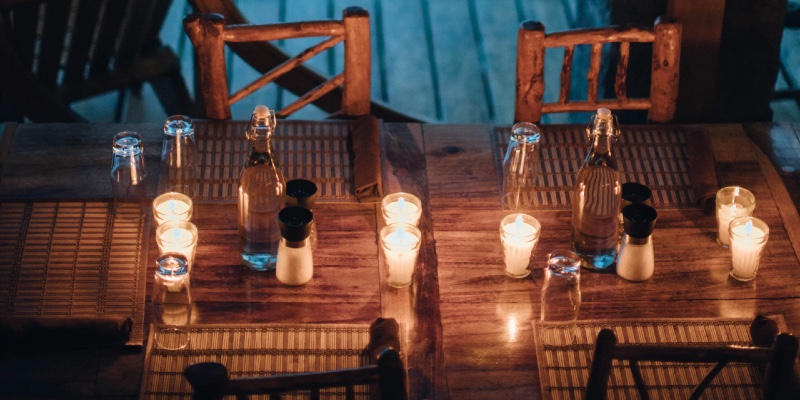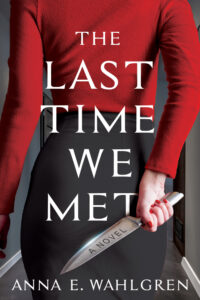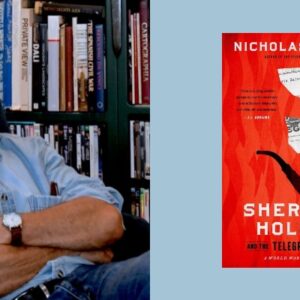Having devoured suspense in all its forms since childhood, there was never any doubt it was the genre I would find myself writing in, when I first began penning novels. Just like other thrill-seekers, I have been enthralled by horror-tinged literature and movies about serial killers such as Hannibal Lecter, only to look nervously over my shoulder as I wandered the town alone after dark. Checking the lock on the door an extra time, peering out the window for out-of-place movement. Always ready to stumble upon the unforeseeable.
But as I sat down to write my first book in 2013, I immediately felt a resistance against writing about explicit violence and acts of madness, that was not where my interest lay. Instead, I was drawn to the word-of-mouth stories we don’t necessarily see in the news every day. The parties that derail, the accidents we keep quiet about, secrets we carry that grow heavier with each passing year. The events that unfold in the company of those we ought to feel safest with – among those we know and trust intimately.
Thoughts of what may lead friends and family members to commit crimes against one another made me start to seriously consider why so many of us are drawn to thrillers. Why do we want to read about terrible crimes and tragic fates? Apart from the obvious adrenaline rush that suspenseful moments provide; I am increasingly convinced that part of the explanation lies in something which has become the driving force when I write my books – uncovering how things can go so disastrously wrong.
For many of us who read, the characters are the key element. Characters we can relate to or that we find fascinatingly unsympathetic, characters in all forms that we become attached to and want to follow throughout an entire book. When I write, it is the gray areas of these characters that I want to explore in an attempt to understand where the line is drawn. Most things in life are not black or white, most of us don’t suddenly wake up one day and become murderers. Yet tragic deaths happen all the time in relationships, among friends and in families. Where is the limit to how much a person can endure? How much, or little, would be required for us to cross the line ourselves?
With a burning interest in psychology, I started on my first book thinking about driving forces and motivation. At first, I wrote about the seemingly obvious; a traumatic childhood that leaves scars which reopen later in life or a personality disorder that makes it difficult to interact with other people socially and blurs the lines of what is appropriate. But the more I write, the more interested I become in the common man. The people we spend long working days with, the people we live with. Friends in whose hands we would place our lives. How much do we really know about them and their struggles?
It became important for me to portray everyday people, and important that none of my characters are portrayed as solely evil or good, I want to twist and turn the qualities we carry within us and show that we all carry both parts to varying extents. Strengths we show outwardly, facades we maintain to fit in. But above all, the weaknesses that under certain circumstances could make us act in a way that no one would expect.
In The Last Time We Met, I take this to the extreme by gathering a group of friends who all know each other inside and out. They’ve been friends since high school and think they know exactly where they stand. But what would be the usual pleasant evening in the company of good friends suddenly ends with an inexplicable, and unsolved, death. Suddenly, they are no longer sure what they know about each other. Ten years later, the group reunites for the first time since that fateful evening, invited by the hostess Ava who, like me, is determined to find out how one of them could die with everyone else present in the same apartment. I never really planned for it to be a locked-room-mystery, but I realized that this particular group of people would never have stayed through the night otherwise. It was the group dynamic that attracted me, the idea of how easy it is to fall back into a cemented role when you are confronted with your past.
With my own twist on the closed room setup, I do a deep dive into each of the characters and play with the dynamics of a group of acquaintances who all have a lot to hide and who thought they had moved on from the people they were ten years ago. I have taken inspiration from the seven deadly sins that are still relevant today when it comes to driving forces. This story is equal parts greed, arrogance and envy mixed with lust and a splash of wrath. If you scratch the surface a little, it turns out that all the characters have some kind of motive when it comes to the death of a close friend. If we dig a little deeper into their background, we get a clearer picture of what would be the worst that could happen to them – and how far they would be prepared to go to prevent it. Because it is within the closest relationships that things can truly ignite the most. More is at stake and a loss stings that much harder. No one can get under your skin and push your buttons like those who know you the best.
It is usually said that opportunity makes a thief, and perhaps that also applies when it comes to violent crimes. Under the wrong circumstances at the wrong time, the line between good and evil is no longer as clear. And while I still make sure my door is locked at night and change sides of the street when I meet a stranger after dark, I’ve come to realize that maybe that’s not what we should fear. Perhaps the most frightening thing is what goes through the mind of the person sitting next to us on the sofa in the evenings.
***


















